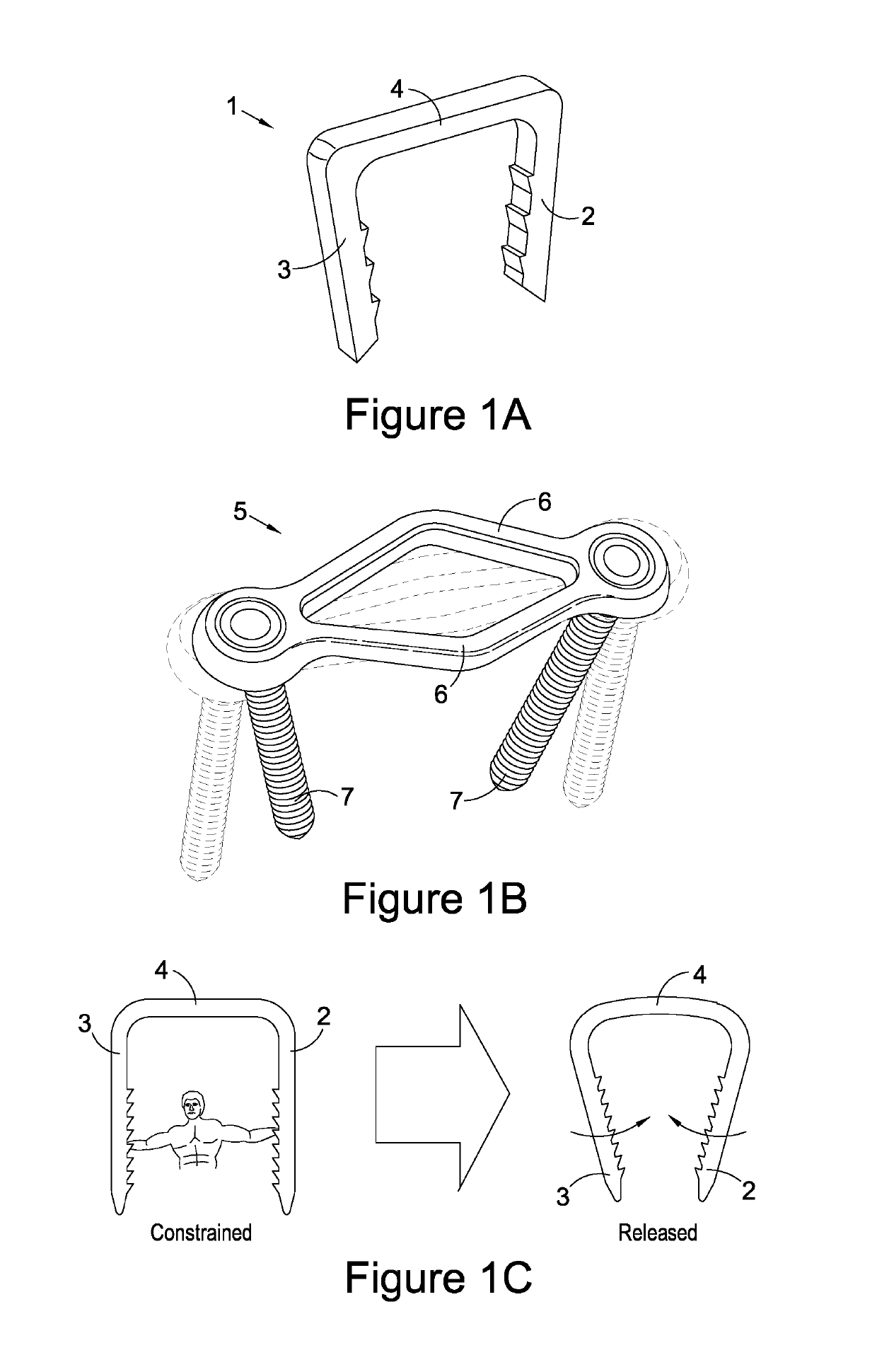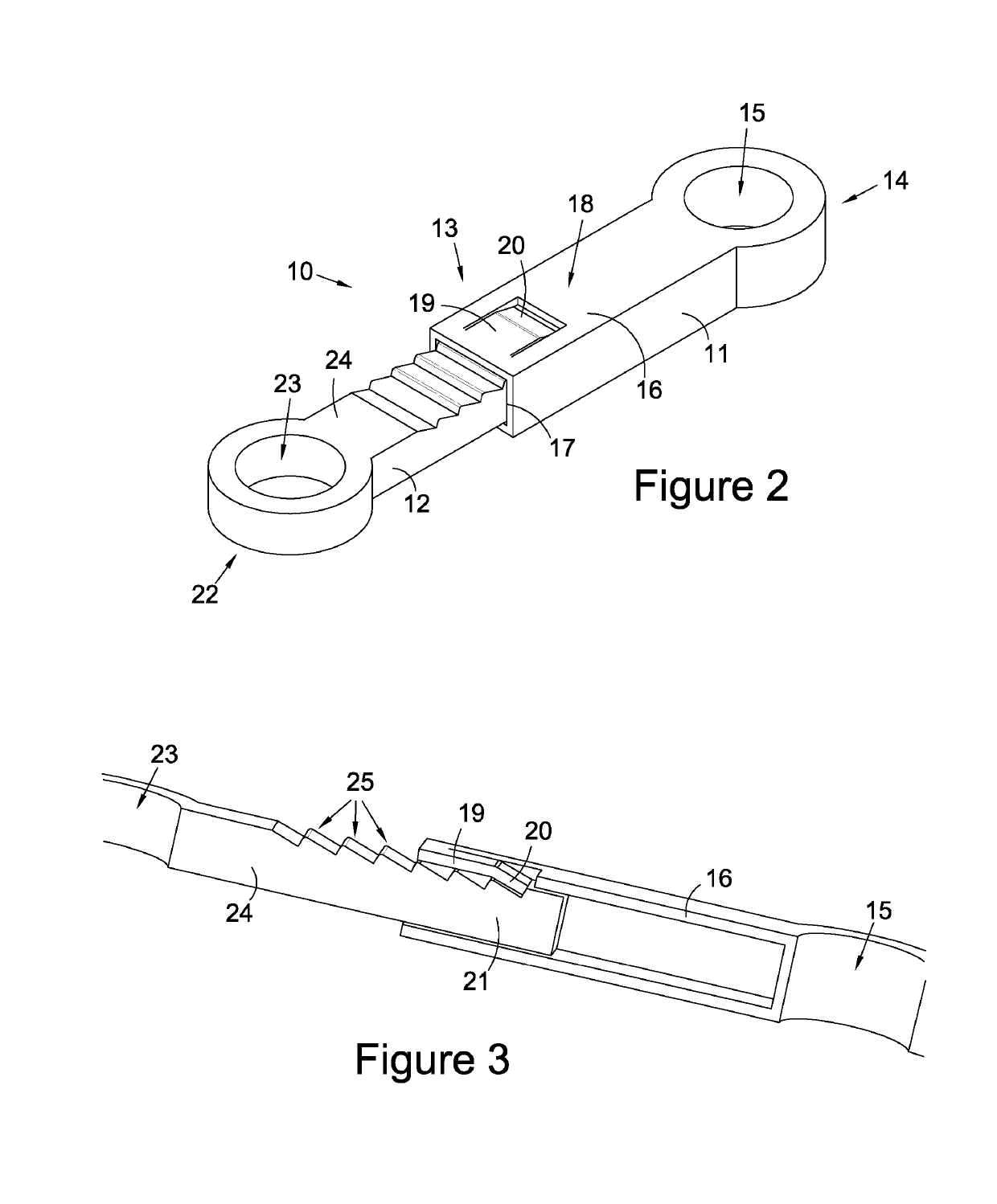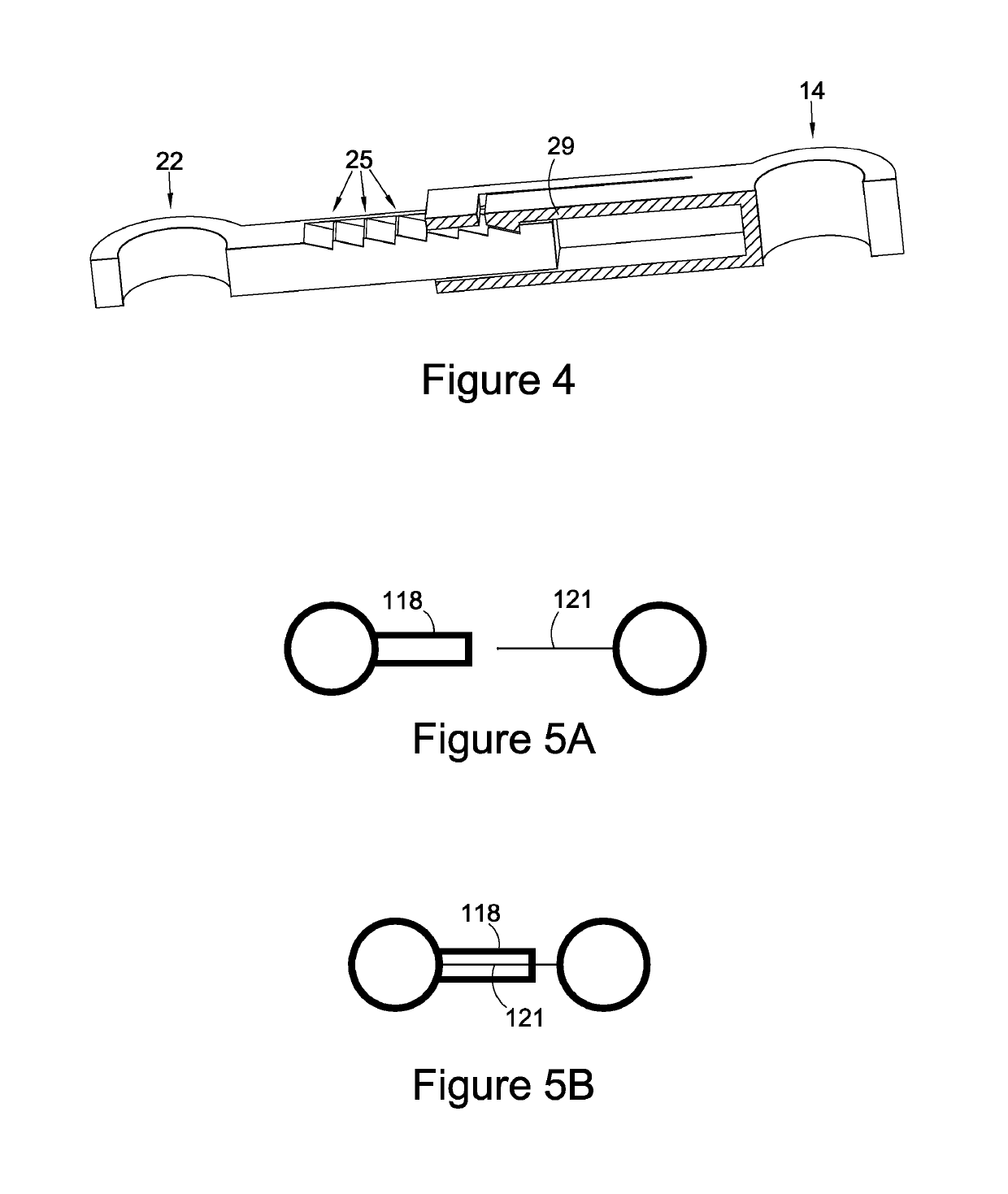Bone ties and staples for use in orthopaedic surgery
a technology applied in the field of bone ties and staples for use in orthopaedic surgery, can solve the problems of weak compression force, cell death, and disruption of blood supply, and achieve the effect of reducing the number of fractures
- Summary
- Abstract
- Description
- Claims
- Application Information
AI Technical Summary
Benefits of technology
Problems solved by technology
Method used
Image
Examples
Embodiment Construction
[0041]In FIG. 2 a bone tie 10 is shown. The bone tie consists of a first (female) sleeve member 11 engaged with a second (male) member 12. The sleeve member is elongate and has a proximal end region 13 and a distal end region 14. The distal end region is formed with an annular, vertically opening eyelet 15. A body portion 16 of the sleeve member is elongate with a hollow cross section. In this embodiment the body portion 16 of the sleeve member has a rectangular hollow cross section, however it may have alternative cross sectional shapes, such as a rounded-rectangular hollow cross section. The proximal end 17 of the sleeve member is open to permit entry of the male member. An upper surface 18 of the proximal end is formed with a U-shaped rectilinear cut which defines a tongue 19. The tongue 19 has a distal end region which is formed with an elbow which causes the end 20 to depend from the plane of the tongue. The depending end 20 thus serves as a cantilever sprung pawl (see FIG. 3)....
PUM
 Login to View More
Login to View More Abstract
Description
Claims
Application Information
 Login to View More
Login to View More - R&D
- Intellectual Property
- Life Sciences
- Materials
- Tech Scout
- Unparalleled Data Quality
- Higher Quality Content
- 60% Fewer Hallucinations
Browse by: Latest US Patents, China's latest patents, Technical Efficacy Thesaurus, Application Domain, Technology Topic, Popular Technical Reports.
© 2025 PatSnap. All rights reserved.Legal|Privacy policy|Modern Slavery Act Transparency Statement|Sitemap|About US| Contact US: help@patsnap.com



